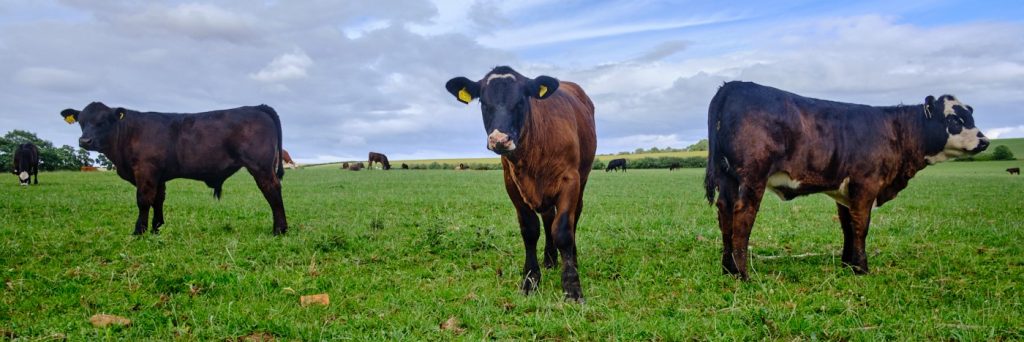
As part of a CIPD course that I’m running, I wanted to give an example of reflective practice. The University of Melbourne have some excellent resources on this, so I pointed the students to these, in which they introduce a four step model. Wanting a practical example, I decided to write this particular item in their format.
DESCRIPTION
I was out for a walk, and came across a field of young cattle. They were curious about me, but cautious too. I stopped for several minutes encouraging them to come closer and then began to take photos. This was one of the last ones.
INTERPRETATION
The cattle (two juvenile females and one intact juvenile male) were interested in me and obviously wanted to engage, but were scared. My position, differences, behaviour, were all outside their experience and so fear is understandable.
I have always been on the periphery of animal welfare. At primary school, I was already fascinated by zoology, and animal rights (I formed an RSPCA Animal Defenders group at school). In the summer, we had a pool in our garden and I remember often trying to save shrews that had fallen into it and drowned. Throughout secondary school I wanted to be a veterinary surgeon, but didn’t get the grades I needed, so I studied zoology and did my PhD in animal behaviour.
For lots of reasons, my employment has concentrated on the relationship between human beings and their work, in particular their emotional connection with it and how this is ‘managed’ by them and others. My photographic interests have mirrored this direction.
About 20yrs ago, I was on a course and had to identify ‘spiritual’ experiences that I had had. Two or three came to mind at the time; they were all eye-to-eye encounters with other species – I described them as a form of communion. The experience with the cattle in the image, had the potential to be another, though it wasn’t.
EVALUATION
This encounter with the young cattle was timely, and has made me question whether there’s a different direction on which I should be heading. Not only am I at a decision point in my research, but as a result of lockdown, I’ve been using some of my time to explore some of the online resources available for teaching. I came across a short course on animal rights photography by Jo-Anne M from Canada. Her approach embraces both the horror of animal welfare, and also the beauty of animals in “rescue” centres. One of the places that she visits regularly is a slaughterhouse, where activists ‘witness’ the animals being taking in. This week, one of the activists was killed by a truckdriver.
I am not averse to a bit of upfront image making, but I wasn’t convinced that joining midnight raids on broiler-houses was my thing.
While the cattle encounter wasn’t spiritual, this has got me thinking about whether photography could provoke or capture that essence?
PLAN
At a basic level, I can see that this picture was better than others because it was taken at their eye-level if not a little lower. I will try to incorporate a similar angle in other shots. It was nearly the last shot as I had to get walking (I was with someone else) but spending longer would enable me to get more shots.
Larger scale, I begin to see a theme emerging around the interaction of sentient beings with the human world around them. I am wondering if this could be the beginning of a ‘body of work’?
I am wondering about ways of creating more opportunities for this kind of encounter.
